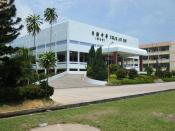Just-In-Time Inventory Systems
1.1. The Concept and Its Practices
Just-In-Time (henceforth as JIT) is an integrated manufacturing process developed to attain high-volume production by utilizing the lowest possible levels of inventory. A JIT system sustains parts flow in order that inventories do not build up at any point of the manufacturing process, enabling rapid completion and demanding active management involvement. Further, JIT struggles for sustenance of minimal levels of all types of inventories: raw materials, works-in-progress, and finished goods (Lieberman and Demeester, 1999).
According to Giunipero et al. (2005), the JIT inventory system - the Kanban concept - was for the first time developed in Toyota Motor Corp. Additional details on the history of JIT are available in Appendix.
Even though the JIT manufacturing is presented and glorified by the literature as a highly beneficial and world-wide accepted concept, still for its successful implementation various organizational "sacrifices" and huge managerial effort are required.
As Pan and Yang (2004) claim, confidence and commitment in JIT are considered to be one of the most important elements. By properly blending and integrating these components into the JIT manufacturing, partnerships with suppliers are developed, and the required material controls are reduced to minimum.
Akintoye (1995) points out that organizational flexibility can be achieved by establishment of long-term and high quality customer-supplier relationships, which are considered to be potential source of competitive advantage. Additionally, intra-organizational commitment is demanded, where all of departments are cooperatively working on achieving common and pre-determined goals supported by the motivation from the management.
Each company has different JIT system, which is developed in such way to fit the organizational needs. Nevertheless, all JIT systems have two characteristics in common: the utilization of processes that systematically detect any operational inefficiency, and the exercise of apparatus for quick response to the...


